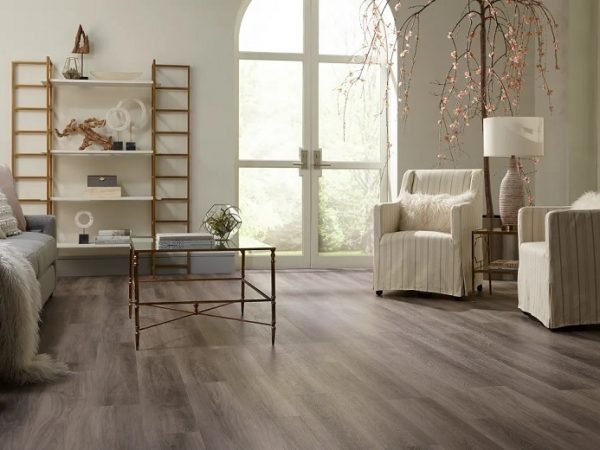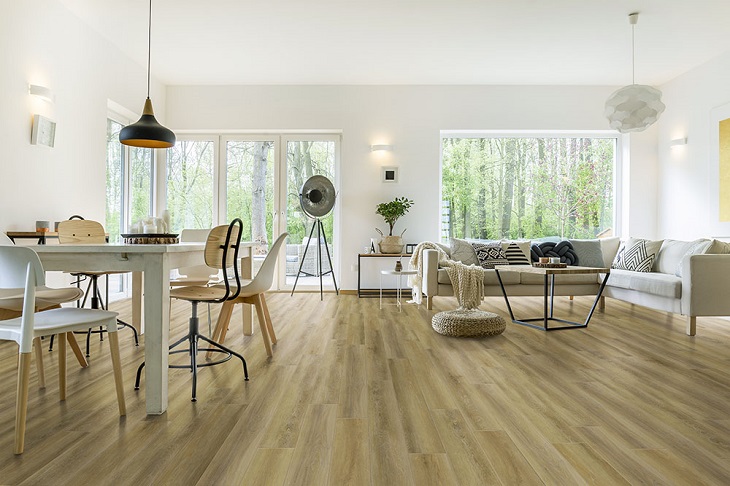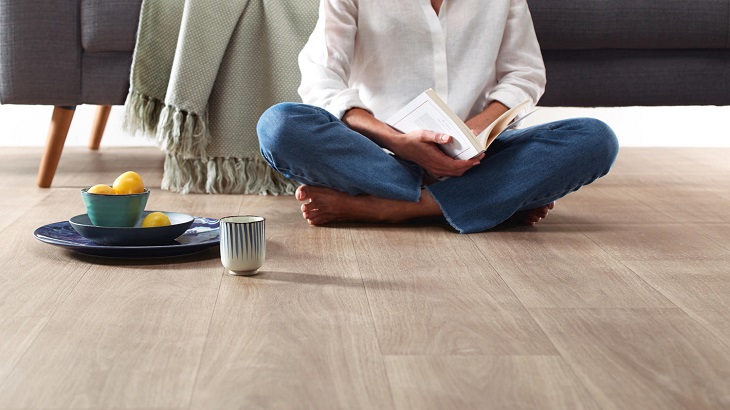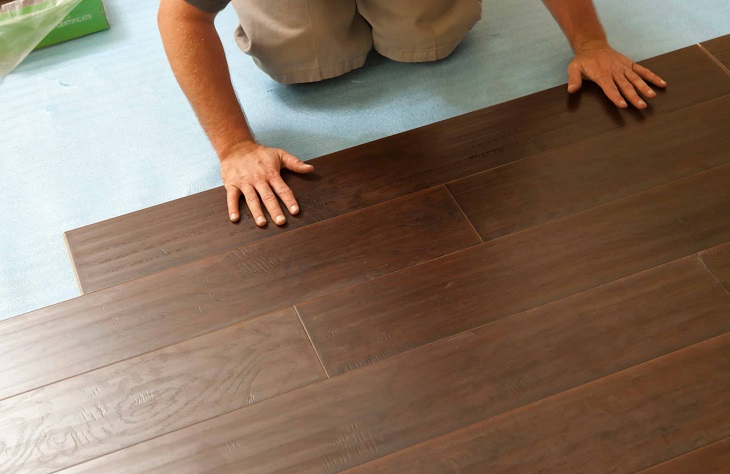20
May

Without a doubt, your home flooring sees a lot of traffic during the day. All that footwork can cause all kinds of damage over time. And this is exactly why you should be extra careful when choosing the kind of flooring you install in your home.
While vinyl hasn’t always been the first choice when it comes to home flooring, recent advances in technology and quality have propelled it to the very top. Multi-layered floor vinyl materials can truly transform the look and feel of your home, all while providing a solid foundation that can withstand everyday wear and tear.

As opposed to other flooring options, vinyl is much more durable and resilient. Its sturdy build consists of several layers that are fused together under heat and pressure. This structure gives vinyl the ability to withstand scratches, scuffs, and stains much better than other flooring materials.
Another big advantage of vinyl flooring is that it’s extremely easy to install. In fact, many types of vinyl flooring can be installed as a floating floor, which means you don’t have to nail or glue it down. This makes it a great do-it-yourself project for any homeowner.
Lastly, vinyl flooring is quite affordable, especially when compared to other types of flooring such as hardwood or tile. So if you’re renovating on a budget, vinyl is definitely worth considering.

Now it’s time to do a quick breakdown of all the layers that make up vinyl floors. Each one brings something special into the mix, resulting in a strong and tough flooring solution.
The initial, or bottom layer of your vinyl floor is typically made up of cork or foam and serves two purposes. First, it acts as a vinyl underlay, eliminating the need to purchase or lay down anything between the existing bare floor and the vinyl. Second, it acts as a sound barrier and a cushion, which results in a more comfortable floor to walk on.
The next layer is a waterproof one, typically made of PVC vinyl. This middle layer is what gives the floor its water-resistant properties and makes it so long-lasting. This is why vinyl is the perfect choice for homes with children or pets. If any accidents do occur, you can quickly and easily wipe up any mess without having to worry about damaging your floors.
On top of the waterproof layer is a thin decorative layer. This is what you actually see when you look at your floor and can be designed to resemble just about any type of material, including wood, stone, or tile. In this way, you have the freedom to customise your floors to match the style of your home.
Finally, the top layer is a clear wear coating that protects the decorative layer from scratches and tears. This is the hardest layer and is what gives the floor its durability and extends its lifespan.
Make sure you take good care of your vinyl floors by regularly sweeping and mopping them. You should also avoid using harsh chemicals or cleaning solutions, as these can damage the protective layer. For tougher stains, you can use a mild soap and water solution. By following these simple tips, you can keep your vinyl floors looking new for years to come.

As is the case with everything else, there is more than one type of floor vinyl solution available on the market. The main difference between them is the way they’re installed into your home, with each one having its own set of pros and cons.
These rectangular pieces are designed to resemble hardwood in both shape and size. They come in a variety of colours and styles, from darker tones to warmer shades. You can also find them in different finishes, such as matte or glossy.
One of the main advantages of vinyl planks is that they’re very easy to install. You can either click them together (a process known as floating) or glue them down to your existing floor.
Stone-looking vinyl tiles are also available. They can be placed in a variety of patterns and come in a variety of colours and sizes. The design options are limitless, with plenty of textured patterns or monochromatic styles available. Grout can even be used in between the tiles to make stone or ceramic tiles look even better.
Since tiles are easier to handle and smaller in size, they can be fit into more compact rooms and locations. If by any chance, a certain section gets damaged, all you have to do is replace it with a new one and you’re all set.
Vinyl sheeting is a roll of flooring that can be up to 4 meters wide. Large spaces may benefit from this since the entire surface can be covered with a single sheet. Make sure you measure the space you have before you order a vinyl sheet so that you don’t have to do any additional cutting or customising at home.
Inlaid vinyl is a popular choice for high-traffic areas since the colour granules are embedded directly into the top layer. This results in a more stable build that can resist even the busiest areas in your home. After all, it’s not like you replace it that often, is it?